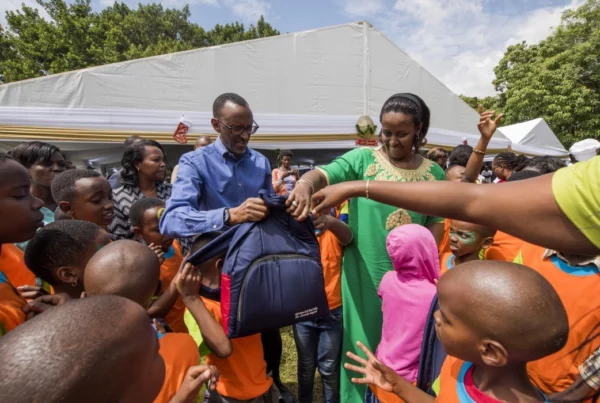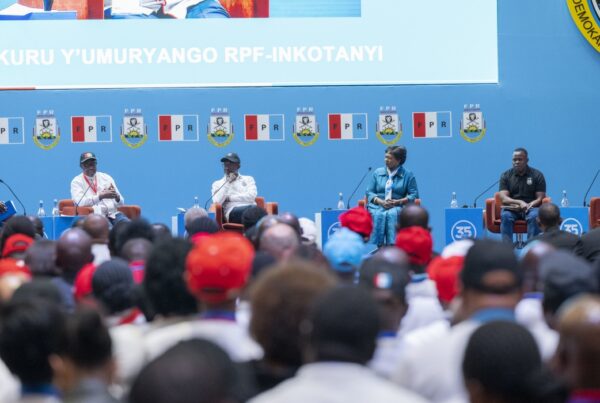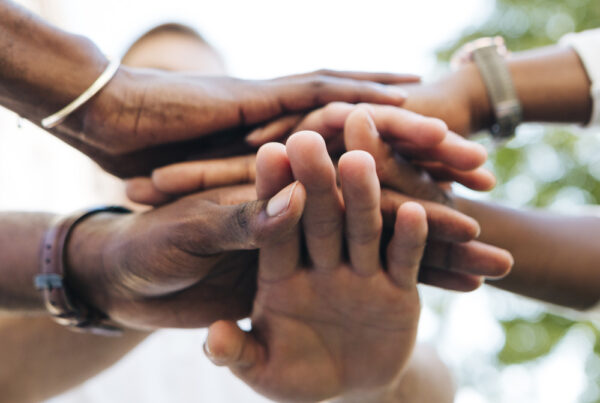“A picture is worth a thousand words,” we are constantly told. However, none has considered corn artists who paint replicas of our pictures and accompany them with trumped-up interpretations?
True, when you identify with a picture and its context, it may be worth a whole library of history. But con artists’ works may be worth a load of wordy drivel.
These umpteen foreign con artists corrupt our pictures and their interpretations so that the veracity of our interpretations is crowded out of public view.
Take a video clip I recently got in a whatsapp message. It shows a group of Rwandans in front of a family home, dancing to the original version of the “Nta ntambara” tune.
To me, that clip alone illustrates how colonialism had categorized that group of Rwandan dancers as “hunters and gatherers” as opposed to the categories of “land tillers” and “cattle herders”. And how it was during the post-colonial-Rwanda era before 1994, an era (pre-1994) when that categorization had been pushed further into fracturing this society.
It’s not of the colonial era because it’s in colour. Photography had not yet acquired colour. Nor of the pre-colonial era, not only because it’s black-and-white but also because that group wouldn’t be dancing alone; all other categories of their compatriots would be there.
Before colonialism, at the mere sound of a clap of hands, crowds of villagers would have poured out of homes around to join the singing and dancing, everyone with their musical instrument. An impromptu kind of celebration would thus start.
It was the same with the call to work, hence the origin of today’s umuganda that has attracted international appeal. So was it, at the sound of an alarm or, more ominously, when war drums were sounded, a reason no single Rwandan was taken slave.
All of which, and more, goes to show that Rwandans lived as a symbiotically closely-knit society.
The bond was so strong that whoever wronged a compatriot, no matter how highly placed in society, received the prompt penalty of a hastily convened Gacaca. Again, thus the origin of the namesake community court system that did wonders with genocide trials, with their accompanying reconciliation bonus.
Of course, as in any society, there were hardcore outlaws whose crimes could call for capital punishment. But these were markedly rare.
How colonialists tricked Rwandans into breaking this bond, with their sweet Bible talk of shared humility, while behind that talk they carried lethal guns unknown in this area and their would-be coup-de-grace genocidal weapon of divide and rule, we do not have to repeat here.
So, back to the clip. Why wouldn’t it be of this post-1994 period?
For one, after the Genocide against the Tutsi, no group of Rwandans was used as a curiosity for tourism, as the clip depicts. The compartmentalisation of Rwandans into categories was the first thing the new government did away with.
The unity, equality and dignity of all Rwandans were priority points on the Rwanda Patriotic Front’s 8-point programme (before the genocide necessitated a 9th), from its inception in 1987.
That alone, without needing details, explains why that family home wouldn’t have consisted of a derelict grass-thatched shack. Those singers and dancers wouldn’t have been bare-foot. The dirt and ballooned tummies with protruding navels wouldn’t have been there.
This side of 1994, everyone is clean thanks to ‘kandagira ukarabe’, a government programme to provide clean water where there is no running water yet. Kids are in good health thanks to mutuelles de santé, the 90+% community health insurance cover that’s admired worldwide. Add to that the Girinka programme, the government offer of a cow per poor family to ensure healthy nutrition and many other benefits and you see a people with improved livelihood all round.
But a Helen C. Espen, even as a veteran of education, would she allow us to see that picture of rich history and how it ensured a speedy recovery from a horrific catastrophe? Not on your life!
The hireling has put some jumbled-up titbits together to make a rambling, clumsy semblance of an opinion on Rwanda to distort all the aforesaid. And a newspaper swallows her tedious ranting of deformation, hook, line and sinker.
In that closely-knit society of our history, a respected mother of our nation used to make a citizen her object of torture? That’d mean she could as well have sold her people into slavery.
A trusted and disciplined high-ranking cadre confided the RPF’s guarded secret to a foreign pedestrian in a foreign office’s waiting room? If it’d been so, slipping out of Uganda unnoticed wouldn’t have happened.
It beggars belief that a self-respecting paper can peddle such reported, nonsensical hearsay from an unknown foreigner as a valid opinion!
Betrayals have happened, all right, but none in those categories quoted, at their various times.
But blame it not on such Espens. They are only hirelings and assets to all those erstwhile trusted custodians of objectivity, for their con pictures: The Guardian, The Financial Times, BBC, VOA, The New York Times, Le Monde, the horde. On matters Rwanda, they’ve lost it!
To them, a fast-transforming Rwanda is a whole load of loathsome unconformity. Such a picture that’s not all hunger, dirt, disorder et al is not a good example to the rest of Africa and a con job need be presented, else these news outlets will starve. For they, too, are hired guns.
Behind them are the systems that killed Lumumba, Rwanda’s Rudahigwa, Burundi’s Rwagasore, to quote only our next-door neighbourhood. And these systems have not exhausted their perpetual puppeteer passions and will use any tool, including “bankrupt” leaders in our neighbourhood, to maintain them.
Talk about turncoats. One such “bankrupt” leader, how sad to recall, set off as the transforming exemplar of an African society that hungered for change but has since morphed into one of what he denigrated as “quislings”.
In your twilight years, selling your soul to what you formally termed “Imperialist vultures” is to face a most dishonourable end, to put it most mildly. But that’s neither here nor there!
As Africans, it behoves us to create masterpiece pictures of growth and integrity in our societies.
On their own, the pictures will tell their stories in thousands of words and defy distortion.



